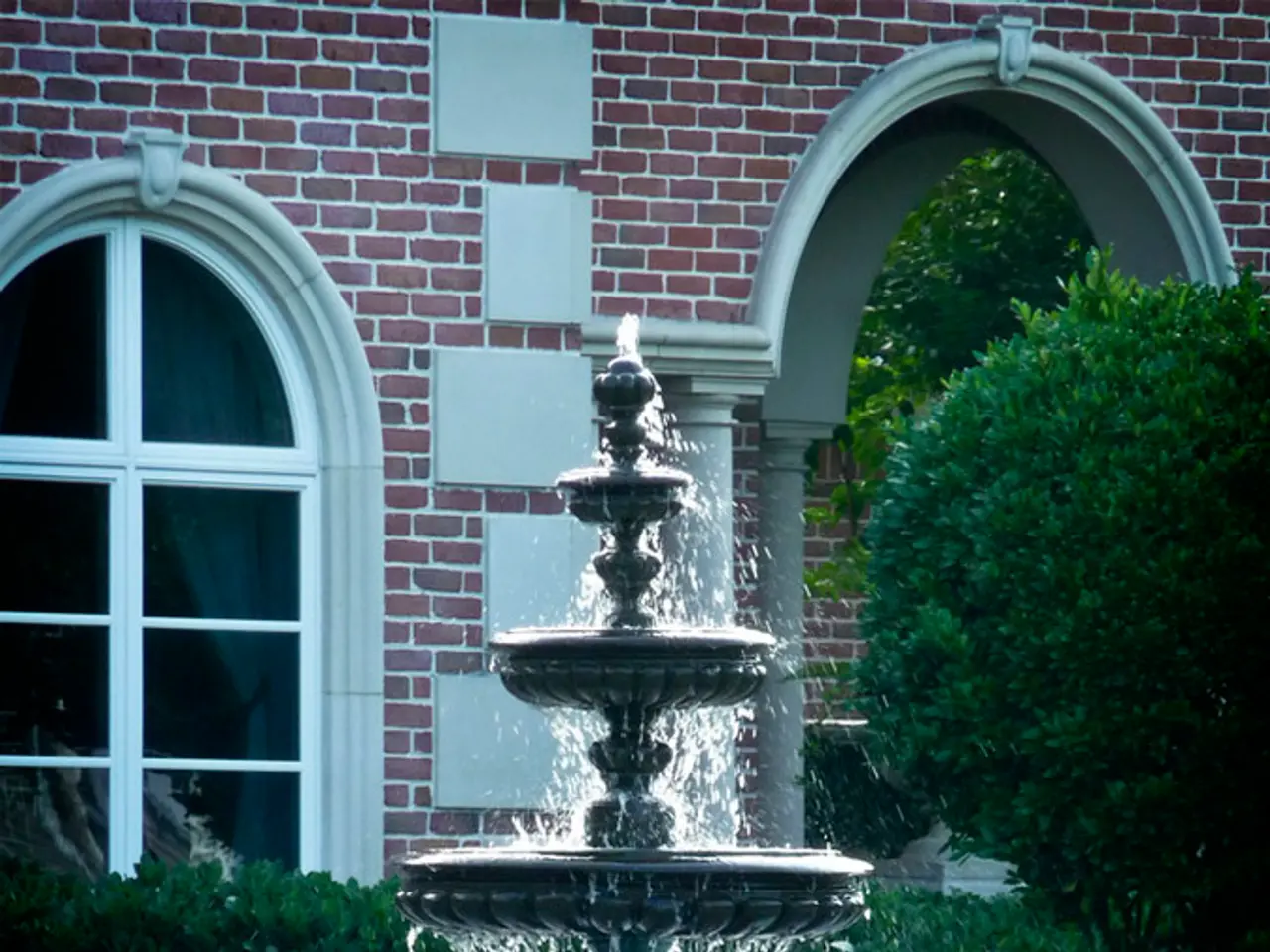Transforming your garden into a tranquil haven with suggestions from proficient landscapers
In today's bustling world, finding a tranquil haven in our own backyards can be a game-changer. Here are some effective strategies for transforming your garden into a peaceful and quiet sanctuary, designed to ease stress and block out unwanted noise.
Water features, such as fountains or small waterfalls, can be a great addition to your garden. They not only break up road noise and provide a cooling effect, but they also mask disruptive noises with gentle, calming sounds, contributing significantly to a peaceful atmosphere.
Screening out eyesores is important, and a well-positioned tree or a pleached boundary can help hide unsightly objects. For those seeking a more permanent solution, dense evergreen hedges or tall shrubs can act as natural noise buffers and privacy screens, enhancing a sense of enclosure and tranquility without the harshness of artificial acoustic fences.
The sound of nature, such as birdsong and insects, is considered better than other distracting sounds. Growing scented plants, such as Philadelphus, roses, lavender, thyme, Daphne, star jasmine, and sweet box, can help lift spirits and promote relaxation.
Creating cozy seating nooks—such as benches, hammocks, or spaces under pergolas or mature tree canopies—invites restful moments and fosters solitude, helping to return focus inward and reduce stress. Employing natural materials for paths and outdoor furniture promotes harmony with the garden’s soothing aesthetic.
For smaller spaces, layering textures with plants, gravel, stone, and greenery maximizes sensory calm, while designs that echo natural forms help maintain an organic, peaceful feel.
Holly Johnston, the designer of the Bridgerton Garden, suggests using hedges within the garden, not just around the boundary. She also recommends layering planting in front of hedges with a mix of shrubs, perennials, and grasses to soften the look and create a cohesive scheme.
Trellis panels can create a visual barrier, but they can sometimes scream "I'm hiding something" and should be avoided. Instead, consider using climbers or decorative fences to create secluded spaces that visually and acoustically separate your garden from noisy surroundings.
Acoustic fence panels can help reduce external noise, but they are expensive and can be unsightly. A more natural and cost-effective alternative is to incorporate soft solar or LED lighting suspended in trees or along pathways, adding a magical, quiet charm in the evening and supporting relaxation.
Green spaces, such as gardens, can improve wellbeing, mood, brainpower, and physical health. Green is the most restful of colors, so using as many shades of green in foliage as possible is recommended. Using large leaves and a variety of different leaf shapes will help create the feeling of a tranquil haven.
Transforming a garden into a peaceful sanctuary can help ease stress. The physical exercise involved in gardening, such as digging and weeding, is good for us and releases endorphins which have a positive impact on our mental wellbeing, as per Juliet Sargeant.
The birch trees at the boundary of an urban garden, designed by John Davies, help screen out overlooking neighbours and make a green focal point. However, painting a fence black creates a black hole and dates, so it's best to opt for a more natural and timeless finish.
By implementing these methods, you can create a garden sanctuary that is visually intimate, blocks or drowns unwanted noises naturally, and encourages mindfulness and relaxation.
- Water features, such as fountains or small waterfalls, are beneficial for a garden, providing tranquil sounds and masking distracting noises.
- To create privacy and a sense of enclosure, consider using dense evergreen hedges, tall shrubs, or pleached boundaries.
- Growing scented plants like Philadelphus, roses, lavender, thyme, Daphne, star jasmine, and sweet box can enhance relaxation in the garden.
- Creating cozy seating areas, such as benches, hammocks, or spaces under pergolas or tree canopies, promotes restful moments and reduces stress.
- For smaller spaces, layering textures with plants, gravel, stone, and greenery can maximize sensory calm and maintain a peaceful feel.
- Holly Johnston recommends using hedges within the garden and layering planting in front of hedges with a mix of shrubs, perennials, and grasses for a cohesive design.




